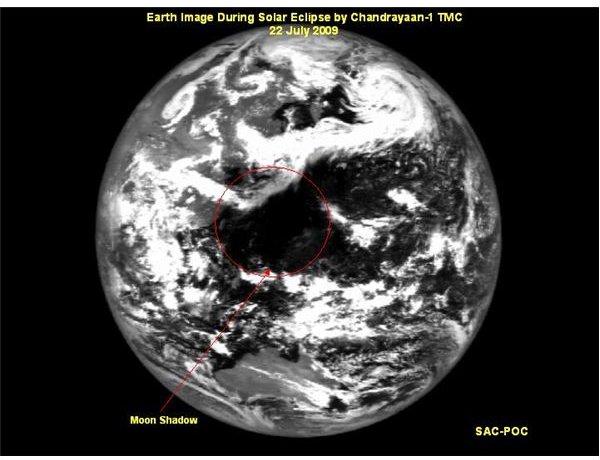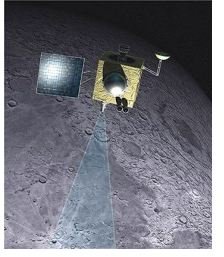Chandrayaan 1: India's First Moon Mission - Its Failures and Achievements Including Discovering Water on the Moon
Chandrayaan 1: Why it Failed
The prestigious Chandrayaan 1 came to an end on August 29, 2009 after ten months of continuous and productive work. It was expected to remain in orbit and send data for two years. Scientists at ISRO (Indian Space Research Organization) claimed that it had achieved 90% of its mission.
What went wrong?
On August 29. 2009 the Indian Deep Space Network in Byalalu near Bangalore, completely lost contact with Chandrayaan-1. It was not an abrupt end, it was the culmination of a number of technical failures which started to surface soon after its launch.
On November 2008, barely after one month of its launch the spacecraft’s power systems started to fail one by one and ISRO was compelled to deactivate some of its payloads. In April this year the star sensor stopped functioning because of the intense radiation of the Sun, and in the next month the backup sensor also failed. Even after these setbacks ISRO was confident about the viability of its mission and they tried to recover the mission by using gyroscopes as the star sensors were necessary to orient the spacecraft. In order to protect the craft from the thermal issues and radiation it experienced at an altitude of 100 km above the Moon, its orbit was raised to 200 km. But, at 1:30 AM on August 29, the base station, which guided Chandrayaan-1 through its orbit, lost radio contact, and finally the optimism that it can successfully complete its two year mission was replaced by the realization that it has met with a premature end.
The system failures point to the inadequacy in a thermal vacuum test conducted before launching. From this analysis they calculated the temperature that the spacecraft would experience at 100 km from the Moon’s surface to be around 75°C whereas in the actual environment around the Moon it was more than 75°C . This led to the failure of the star sensors which play a pivotal role in controlling the position of the craft in space.
Artist’s Concept of Chandraayan 1 in Lunar Orbit
Chandrayaan 1: Accomplishments
The biggest achievement of Chandrayaan-1 is the detection of water on the Moon’s surface. This discovery was confirmed by NASA on the 25th of September 2009. NASA’s Moon Mineralogy Mapper ( M3) on board of Chandrayaan-1 detected water and hydroxyl molecules on the surface soil and rocks on the Moon. They were found on the sunlit region of the Moon, so scientists assume that the water is produced by the interactions of solar wind, which contains hydrogen ions, with the lunar soil, which has oxygen rich minerals in it.
Earlier, in 1999, the Cassini space probe, which was on its way to Saturn, sent data which pointed towards a possibility of having water on the Moon’s surface. Later, in 2005, the Deep Impact Spacecraft, which was on its way to the comet Tempel-1, too, pointed towards such a possibility. Since Chandrayaan-1 studied the Moon from an orbit which was only 100 km away from the lunar surface, M3 was able to collect data which no other spacecraft could. M3 used a spectrometer to study the sunlight reflected by the lunar surface and found that certain components were missing from the reflected light. Even though it may take a number of years before this can be used for the benefit of humanity, the discovery of water is a landmark in the history of science.

Earth’s image during solar eclipse taken by Chandrayaan 1 TMC on 22 July 2009
Though Chandrayaan-1 failed to complete its tenure in space it provided an insight for the Indian scientists about the precautions to be taken before launching Chandrayaan-2. They are planning to make thermal shields which can withstand more than 100°C.
The spacecraft completed 3,400 orbits around the moon and took over 70,000, high quality images. These pictures shed light onto the mountains and craters of the Moon, particularly in the polar region, which is always shadowed and hence usually pictures obtained are of poor quality. Together, with NASA’s Lunar Reconnaissance Orbiter it searched the Moon’s north pole for the presence of water ice. On November 14, 2008, the Moon Impact Probe touched the lunar soil, thus marked the success of India’s maiden lunar venture.
Scientists at NASA pointed out that Chandrayaan-1 gave evidence for the Lunar Magma Ocean Hypothesis. According to this hypothesis, because of an immense amount of energy liberated during its formation, a major portion of the Moon was in a molten state, and this resulted in a lunar magma ocean. The images confirm the presence of anorthite, a calcium rich plagioclase on the surface of the Moon. This lunar mission has collected a lot of information on the minerals on the Moon, and on the chemical composition of the lunar soil. This helps to understand the evolution of the Moon in a better way. Another breakthrough is the dispelling of all the myths which surrounded the US Apollo 15 Moon mission. The Terrain Mapper Camera on Chandrayaan-1 took pictures of the landing site of Apollo lander and of the lunar rover, which was used by the astronauts to traverse the surface of moon.
In comparison with many other space missions, which were not even able to send a single signal back, Chandrayaan 1 was a huge success.
Sources
The Hindu, September 25, 2009.
The Hindu, September 3, 2009.
images
https://www.isro.org/satellites/moonimages.aspx
https://www.sott.net/articles/show/192315-Chandrayaan-1-ISRO-loses-contact-claims-mission-over-
